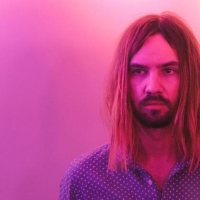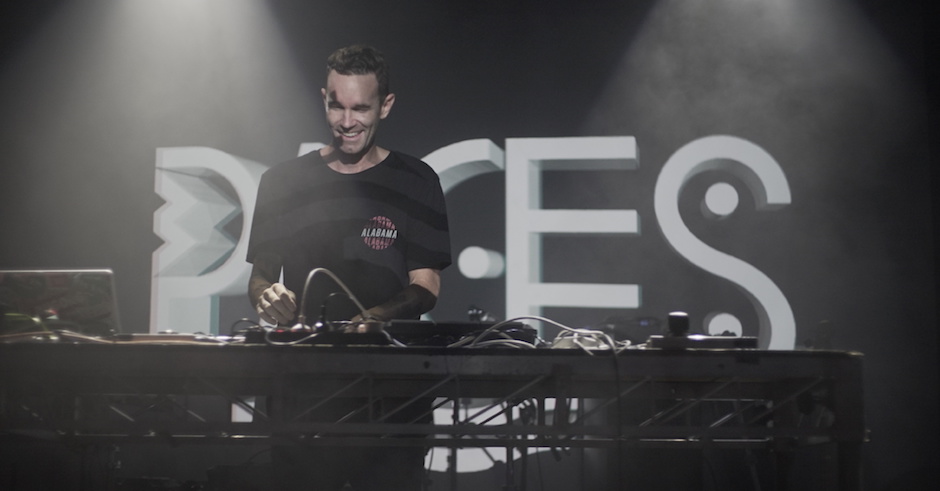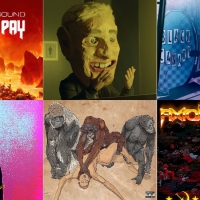 Can we please stop making up news stories about Tame Impala?No they're not quitting. Yes he's the main force behind the name.
Can we please stop making up news stories about Tame Impala?No they're not quitting. Yes he's the main force behind the name.

Things We Learned At This Year’s Electronic Music Conference
Gathering some of the world's biggest industry names, this year's Electronic Music Conference was one for the ages.
Header Image of Paces at EMC Play 2016, taken by Lowanna Daoudopit.
Spread across two days (three, if you count the pre-drinks), this year’s Electronic Music Conference gathered some of electronic’s biggest industry figure-heads. Discussing everything from how to master tracks, to the strength of Berlin’s club scene, to the importance of art in electronic music, this year’s EMC was one of the most varied and broad. So, for all those punters who couldn’t make it to Ivy complex for this year’s conference, here’s some take-home messages we’ve gathered from the two days.
FOR AMSTERDAM, A STRONG NIGHTLIFE AND CULTURAL SCENE MEANS EVERYTHING - AND EVEN THE POLITICIANS KNOW THAT
After a brief welcoming from Junkee CEO Neil Ackland, Amsterdam’s fabled night mayor Mirik Milan showcased Amsterdam’s vivid nightlife and creative arts world with an informative presentation, followed by a sit-down conversation about Sydney’s lock-outs with City of Sydney councillor Jess Scully. In his initial presentation, Milan detailed how the city’s title as a creative capital has allowed Amsterdam to bloom culturally, showcasing the importance of nightlife from a social, cultural and economic perspective. He made the explicit point that Amsterdam’s city council and mayor co-operate with himself, as well as other Amsterdam creatives, to give what is best for the strength of Amsterdam’s rich cultural scene.
Whether it is the City of Amsterdam redeveloping over 60 vacant office buildings and turning them into creative hubs such as recording studios or galleries, or the incorporation of art spaces, restaurants, markets and other attractions into modern-day nightclubs to make them appealing for a broad array of people, Mirik Milan was full of ideas and examples on how to get Sydney’s cultural scene picked up and moving again after the consistent blows of regulations and laws, laws which he say would ruin Amsterdam on a “cultural, economic and social level”.
GOOD ART DIRECTION IS IMPORTANT FOR ELECTRONIC ARTISTS - ESPECIALLY WHEN IT COMES TO CREATING A BRAND AND PUBLIC IMAGE

Photo taken by shiBBi
The Art of Rave forum was one of the more laid-back events, with everyone from Jimmy Edgar to Nina Las Vegas to Future Classic’s Jay Ryves discussing the importance of art in electronic music. The latter of which, who co-ordinated Flume’s Skin art direction with designer Jonathan Zawada, agreed with the rest of the panel that music should be much, much more than music, especially when paired with the right vision and direction when it comes to art.
That, and although contested by Motorik’s Patrick Santamaria, the visual aesthetic behind your brand – including your logo – is incredibly important. Nina Las Vegas, who has one of the more iconic artistic images in electronic music, agrees that having a strong visual aesthetic behind your brand instantly makes yourself and your image more recognizable outside of clubs and shows, as well as helping ‘educate’ the general public when you wear a Nina Las Vegas tee out in public, for example.
THE FUTURE OF LIVE STREAMING IS BRIGHT, AND VIRTUAL
With an all-star panel including Boiler Room’s Raj Chaudhuri, Sydney Opera House’s Ben Marshall and Red Bull Australia’s Erica Valenti, the exploding world of live streaming was discussed in-depth at this year’s ‘Coming To You Live’ panel, one of the most attended across the whole two days. With platforms such as Facebook and Twitter recently entering the live-streaming game, the panel agreed that the future of live broadcasting is a strong one, and that the worlds of augmented reality and VR are going to usher in a completely new way of seeing things. Highlighting their work with festivals including Austin City Limits and Lollapalooza, Red Bull’s Erica Valenti explained that, with increasing ticket price and travel costs deterring punters from festivals themselves, the possibilities of experiencing festivals like these in virtual reality realms are endless and incredibly exciting.
IN ELECTRONIC MUSIC, LIVE SHOWS ARE ALL ABOUT AMPLIFYING ARTIST PRESENCE - AS A PRODUCER STANDING BEHIND A LAPTOP IS A LOT LESS INTERESTING THAN A FOUR-PIECE ROCK BAND
As told by Toby and Pete’s Toby Pike, the importance of a live show is so much greater for electronic musicians. Using their work on Flume’s Infinity Prism as an example (which they boast was ran by six laptops – including two for the music itself), Pike explained that electronic musicians must create an experience out of their live shows in order to compete with a ‘live band setting’, a thought backed up by Bionic League’s Martin Phillips.
Working alongside Daft Punk to create their infamous ALIVE 2007 Pyramid stage-show, Phillips also discussed how the recognizable show came about and the ideas that eventually led to the pyramid – dropping hints that he had recently met up with the duo again in the process. Continuing on with the topic of incorporating more experiences into electronic live performances, the panel agreed that live shows were incorporating more and more of the ‘fine arts’, whether it be live guitar, vocals, or in the case of Flight Facilities, whole symphony orchestras.
BEING A WELL-KNOWN AUSTRALIAN ELECTRONIC PRODUCER ISN'T EASY - JUST ASK ALISON WONDERLAND

Photo taken by shiBBi
Alison Wonderland’s opening keynote on the second day of the conference covered a lot of topics, including her thoughts on Sydney’s controversial lockouts (“It's weird to be watching less and less people in Oxford Street and Kings Cross, I was there on a Friday night once and there was no one around, it was actually quite disheartening and embarrassing”), her thoughts on her exciting live show ideas (“As someone who loves live music, I want to create experiences – it doesn’t have to be at a club”) and her new album (“I’ve definitely been writing a lot more pop music, but at the same time I’ve made some really messed up, experimental beats. I’ve definitely been writing a lot more with cello, and adding strings to beats”), but one thing that definitely struck a chord was her experience as a common-name Australian producer.
“There’s a lot of ego in this industry, and it’s intimating to put yourself out there when there are so many loud people out there” she says, pin-pointing the fact that unlike in the US (where she now resides), Australia has a strong case of the ‘Tall Poppy Syndrome’. “I feel like a lot of people turn on you when you start to do well in Australia” she says, comparing it to the US where people are generally a lot nicer to you when you become more popular.
She also mentioned that although her live sets bring her joy and happiness, there’s only so much touring and being away from loved ones that you can handle. In conversation with InTheMix’s Katie Cunningham, Wonderland admitted that “there has been a lot of times I’ve wanted to walk away, not seeing your loved ones and not sleeping in your own bed all the time is hard”.
EVERY ASPECT OF THE MUSIC INDUSTRY IS EVOLVING, ESPECIALLY WITH THE CONSTANT GROWTH OF TECHNOLOGY (AND SPOTIFY IS BLOODY IMPORTANT)
Whilst the panel on how to build a dynamic team around you didn’t exactly provide what the panel title would suggest, the varying speakers did offer some insight into what the future of electronic music offered. Junkee CEO Neil Ackland said that with increasing social media and mobile use, there is an increasing demand for something “thumb-stopping”, as in something that stops people from scrolling through their social feeds and actually engage with the content.
Meanwhile, Ministry of Sound’s Duncan Collins and Inertia Group’s Colin Daniels agreed that Spotify is definitely the way forward in music listening, with Daniels even going onto say that “Spotify will easily be the next radio”. Swerve Group Co-Founder Ignacio Garcia mirrored this thought, applying his knowledge through managing acts under the Audiopaxx umbrella to say that “success is purely coming from Spotify nowadays” and that “finding a team or a manager that understands where technology is going and how this impacts the music business is crucial”.
THE SUPER FESTIVAL ISN'T QUITE OVER YET, WITH ULTRA MUSIC FESTIVAL "100%" LAUNCHING IN AUSTRALIA SOON
Whilst I’m not sure how a panel exploring how to evolve your online brand got onto the topic of Australia’s festival market, it did. With Steve Aoki recently asking where Australia’s large-scale electronic festivals have disappeared to, ONELOVE’s Ant Celestino and The Division Agency’s Scott Roberston said that it was only a matter of time, with the over-saturation of small-scale boutique festivals actually creating some-what of a niche for large-scale, multi-day festivals. That being said, they did agree that the source of these large-scale festivals would not be from Australia, further elevating points by ex-promoters such as AJ Maddah (Soundwave, Big Day Out) concerning UK rock festival Download’s hotly-anticipated move to Australian shores.
Oh, and someone on the panel (not naming names or anything) said that Ultra Music had “100%” explored the opportunity for a large Australian electronic festival, with it only being a matter of time until they decide to act on filling this gap in the festival market for a large-scale festival. So, it’s no longer a matter of if, but more-so a matter of when for the Miami-born festival giants.
CONTRARY TO POPULAR BELIEF, SYDNEY IS NOT DEAD

Photo taken by Lowanna Daoudopit
One of the hotly-discussed topics across the whole Electronic Music Conference this year was the lock-out laws, with #KeepSydneyOpen founder Tyson Koh spotted around the conference which was littered with ‘Make Sydney Great Again’ hats and ‘Keep Sydney Open’ shirts. Though, on the Wednesday night – despite the rain – Sydney was alive. Multiple venues spread across the whole city were jammed with artists, taste-makers and general punters, with everyone from Flume to Silverchair’s Daniel Johns checking out the Australian talent at Oxford Arts Factory, Oxford Circus, The Hudson Ballroom and The World Bar – where even What So Not jumped on for an unexpected spin.
Although Sydney’s night-life may have taken a hefty hit in the past three years, EMC Play is just proof that if Sydney bands together and becomes one, the streets may just be alive once again.
 Can we please stop making up news stories about Tame Impala?No they're not quitting. Yes he's the main force behind the name.
Can we please stop making up news stories about Tame Impala?No they're not quitting. Yes he's the main force behind the name.
 10 Tunes Of 2016 With Mike, Our Work Experience KidSharing a much deeper music knowledge and writing ability than our entire office combined.
10 Tunes Of 2016 With Mike, Our Work Experience KidSharing a much deeper music knowledge and writing ability than our entire office combined.